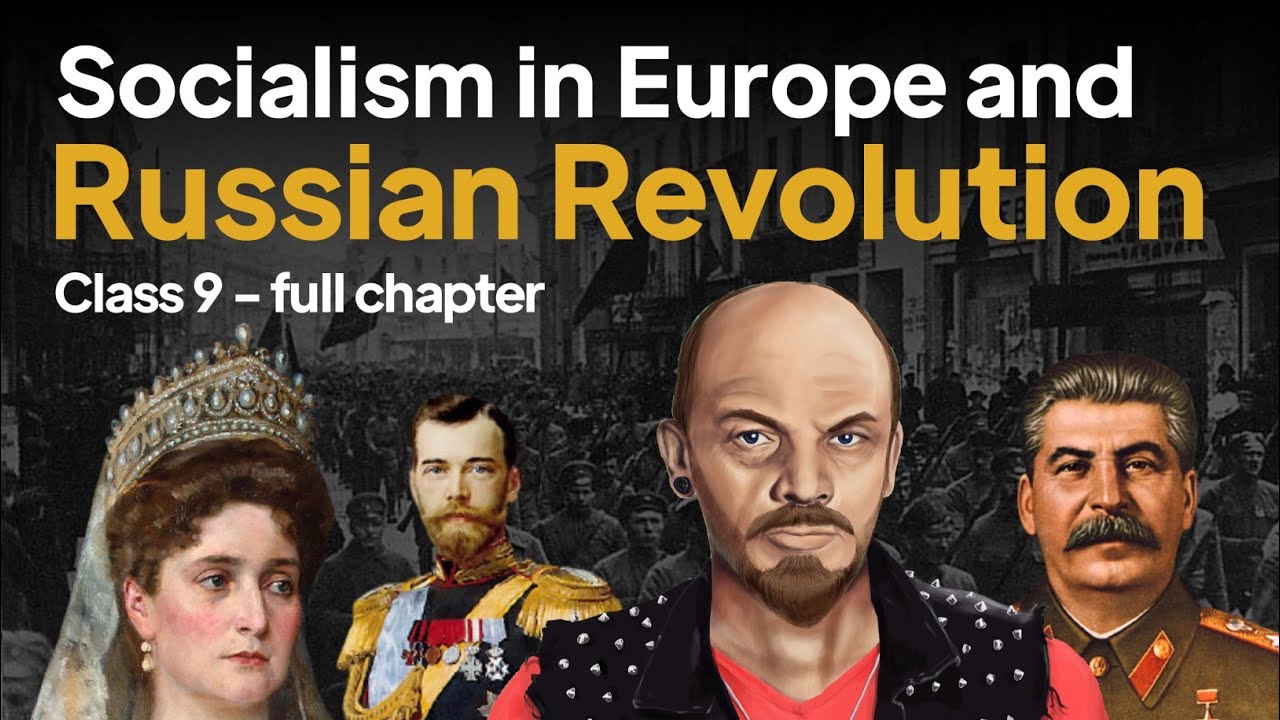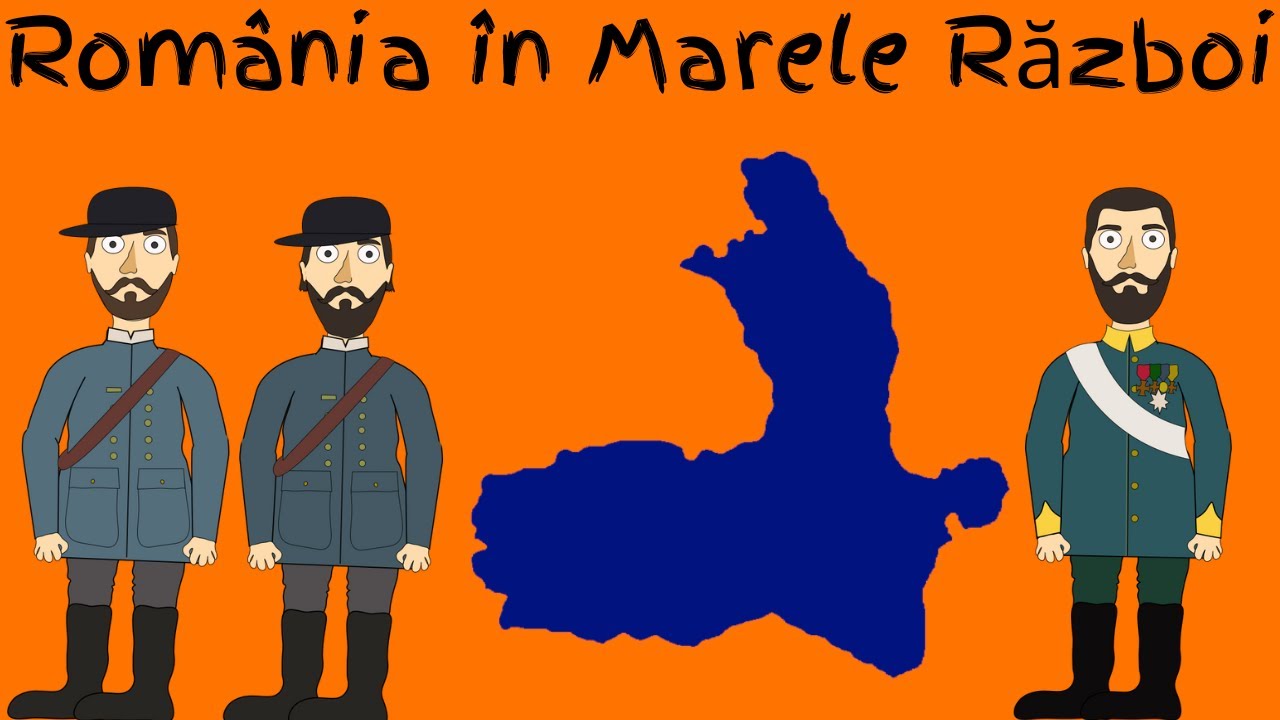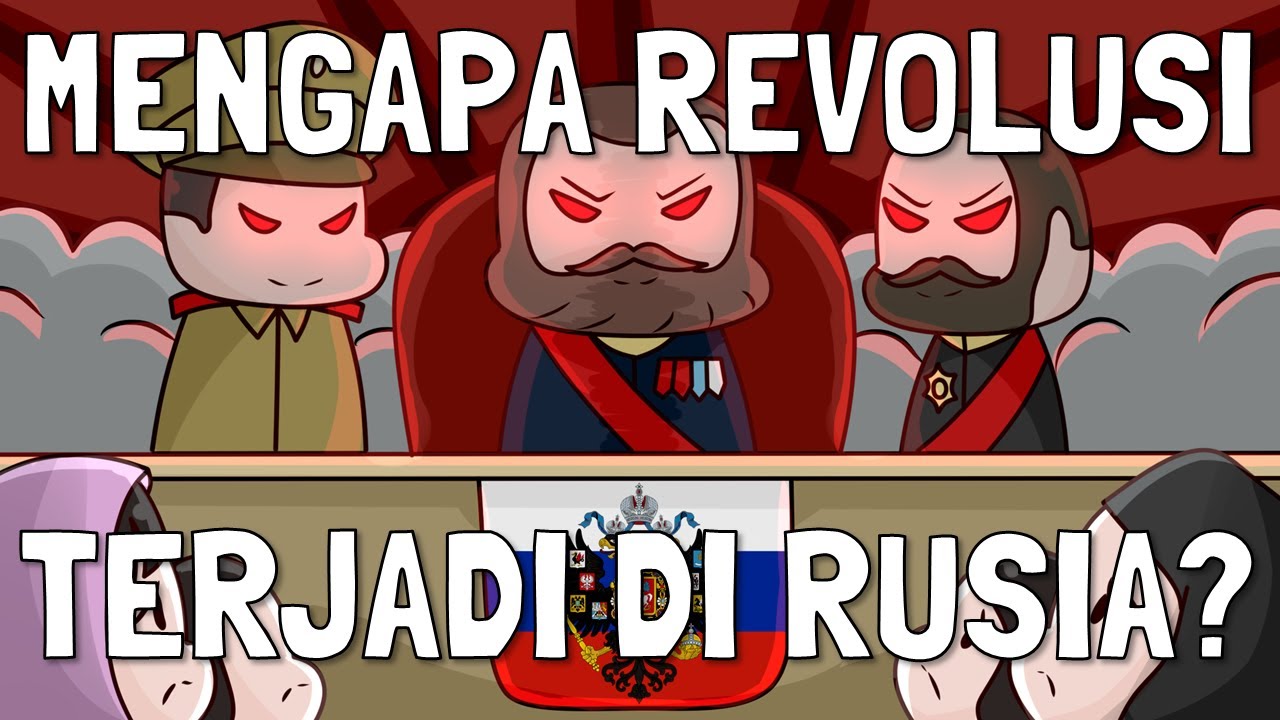Socialism in Europe and the Russian Revolution | 10 Minutes Rapid Revision | Class 9 SST
Summary
TLDRThe video script delves into the historical context and impact of the Russian Revolution and the emergence of socialism in Europe. It explores the societal and political shifts in Europe, the influence of the French Revolution, and the radical changes in Russia's social fabric leading to the 1917 Revolution. The script also discusses the rise of socialism, the Bolsheviks' role, and the transformation of Russia under Lenin and Stalin, including the implementation of collectivization and five-year plans. The narrative highlights the global influence of these events, shaping the workers' state and the course of history.
Takeaways
- 📚 The script discusses the historical context and impact of the ideas of socialism in Europe and Russia, particularly focusing on how these ideas were implemented and the events that transpired, such as the revolutions in France and Russia.
- 🌍 It highlights the French Revolution's role in opening up possibilities for society to be organized democratically and how it influenced various experiments across Europe.
- 🏛 The script describes the different political tendencies within the European society of that time, including Liberals, Radicals, and Conservatives, and their respective views on change and property rights.
- 🏭 The industrial development in Europe is mentioned, with Liberals and Radicals being the owners of industries and their desire for change, including better working conditions and unemployment issues.
- 🔧 The emergence of socialism as an ideology is explained, emphasizing the idea that resources should be owned and managed by society as a whole rather than individuals seeking private profit.
- 👥 The script talks about the experiments with socialism, such as the establishment of cooperative communities in the US by Robert Owen and in France by Louis Blanc, and the concept of workers receiving profits based on their labor.
- 📜 Karl Marx and Friedrich Engels are mentioned as taking the ideas of socialism to an extreme, advocating for the abolition of private property and the distribution of profits according to the needs of society.
- 🇷🇺 The Russian Revolution and the state of the Russian Empire under Tsar Nicholas II are discussed, including the economic conditions, the majority of the population being agricultural laborers, and the unique situation of Russian peasants.
- 👨🌾 The script explains the social and economic disparities in Russia, the lack of respect for the nobility by Russian peasants, and their collective farming practices, which seemed to align with socialist ideals.
- 🔄 The Russian Revolution of 1917 is detailed, describing the February Revolution that led to the end of the monarchy and the subsequent October Revolution led by the Bolsheviks, resulting in the establishment of a socialist state.
- 🛠️ Post-revolution, the Bolsheviks introduced policies such as nationalization of banks and industries, land redistribution, and the introduction of a centralized administrative system focused on rapid industrial growth.
- ⏳ The script also touches on the challenges faced during Stalin's era, including food shortages, the introduction of collectivization, and the impact of centralized planning on the society and economy.
Q & A
What is the main theme of the 'Class Nineth Rapid Revision Chapter' discussed in the transcript?
-The main theme revolves around the concept of Socialism in Europe and the Russian Revolution, detailing how the idea of Socialism was implemented in Russia and the events that transpired during the revolution.
How did the French Revolution open up possibilities for societal change according to the transcript?
-The French Revolution opened up the possibility of transforming society into a democratic setup, which inspired various experiments across Europe and the idea that society could be prepared for such changes.
What were the three main political tendencies in European society at the time discussed in the script?
-The three main political tendencies were Liberals who advocated for tolerance of all religions and elected government, Radicals who sought radical changes in society and supported universal voting rights, and Conservatives who were the royal gang wanting to maintain the status quo and resist changes proposed by Liberals and Radicals.
What was the role of the Industrial Revolution in shaping the social changes discussed in the script?
-The Industrial Revolution led to the development of an industrial society with growing industries and a working class that were the main supporters of Liberals and Radicals. It created dissatisfaction with working conditions and unemployment, leading to demands for change.
What is Socialism as an ideology, and how did it emerge in the script?
-Socialism as an ideology posits that resources should be owned and controlled by society as a whole rather than individuals. It emerged as a response to the concentration of wealth and resources in the hands of the few and the exploitation of workers.
How did the Russian society differ from other European societies in terms of agriculture and land ownership as per the script?
-Russian society was primarily agrarian with a majority of the population involved in farming. Russian peasants were distinct from other European farmers in that they worked collectively on their lands, which gave an impression of a more communal or socialistic approach to agriculture.
What were the key events that led to the 1905 Russian Revolution, as mentioned in the transcript?
-The key events leading to the 1905 Russian Revolution included the Bloody Sunday massacre, where peaceful demonstrators were fired upon by the Tsar's guards, resulting in many deaths and injuries, which ignited a series of protests and strikes across the country.
What was the impact of World War I on the Russian economy and society, according to the script?
-World War I had a devastating impact on the Russian economy and society, causing a severe shortage of supplies, leading to widespread unemployment, and disrupting the industrial sector. It also led to a significant loss of life and created a sense of disillusionment among the people.
How did the February Revolution of 1917 lead to the end of the Russian monarchy, as described in the script?
-The February Revolution of 1917 was triggered by food shortages and strikes. It culminated in the formation of the Soviet, which led to the abdication of Tsar Nicholas II, marking the end of the Russian monarchy and the beginning of a new era in Russia.
What were the main objectives of the Bolsheviks during the October Revolution of 1917, as per the script?
-The main objectives of the Bolsheviks during the October Revolution were to seize power, overthrow the Provisional Government, and establish a socialist society by nationalizing banks, industries, and redistributing land to the peasants.
How did the policies of Stalin's era differ from the initial ideals of the Russian Revolution, as outlined in the script?
-Stalin's era introduced centralized planning and collectivization, which led to strict control over the population and a departure from the initial democratic ideals of the revolution. It also saw the introduction of the Five-Year Plans aimed at rapid industrialization, but at the cost of poor working conditions and limited resources.
Outlines

此内容仅限付费用户访问。 请升级后访问。
立即升级Mindmap

此内容仅限付费用户访问。 请升级后访问。
立即升级Keywords

此内容仅限付费用户访问。 请升级后访问。
立即升级Highlights

此内容仅限付费用户访问。 请升级后访问。
立即升级Transcripts

此内容仅限付费用户访问。 请升级后访问。
立即升级浏览更多相关视频

O QUE É SOCIALISMO? | Pensadores Socialistas | Breve Histórico

Socialism in Europe and The Russian Revolution Class 9 | Class 9 History Chapter 2 | CBSE | NCERT

De ce a luptat România în Primul Război Mondial?

Sejarah Gelap Kekaisaran Rusia & Ancaman Paling Menakutkannya | Sejarah Revolusi Rusia (Part 1)

A NEP Soviética: socialismo, mercado e história

Capitalism and Socialism: Introduction to new books by Dr Mubarak Ali
5.0 / 5 (0 votes)
